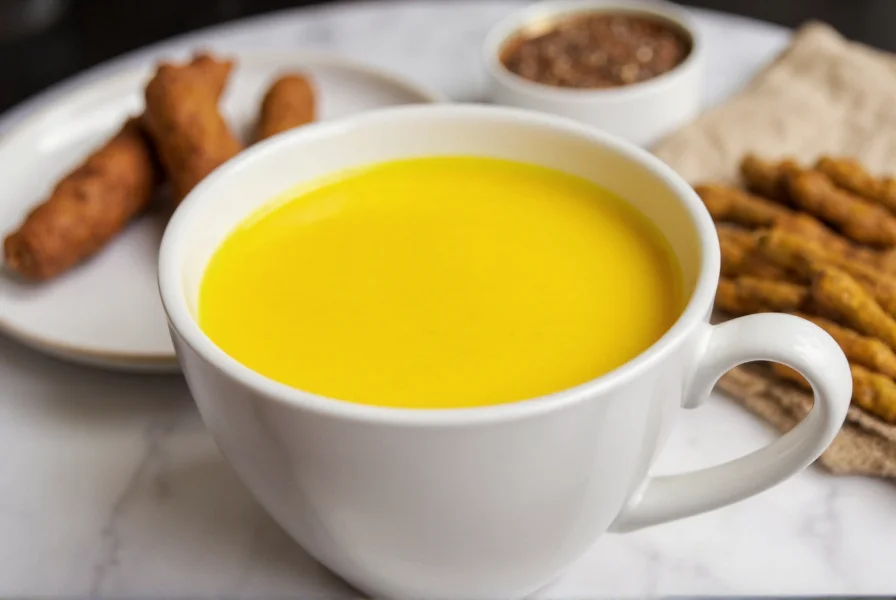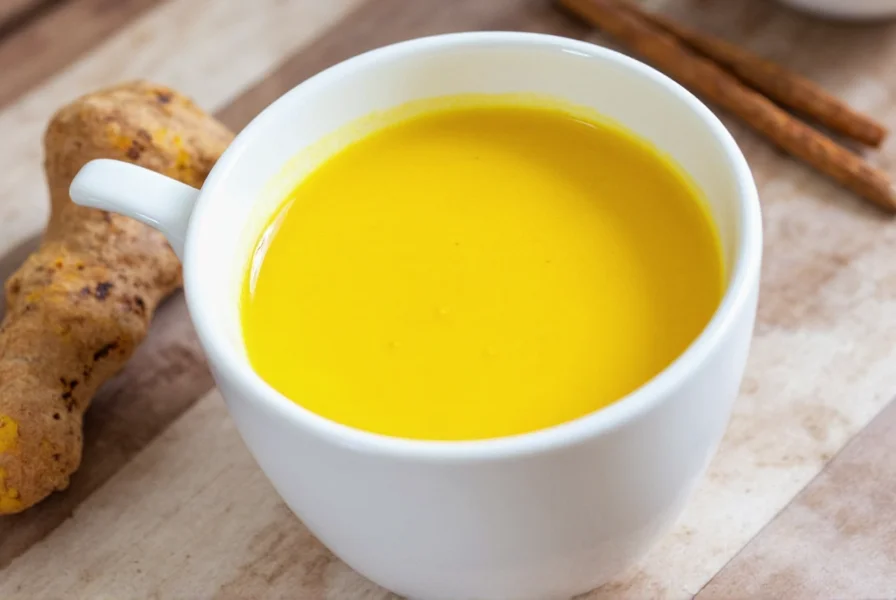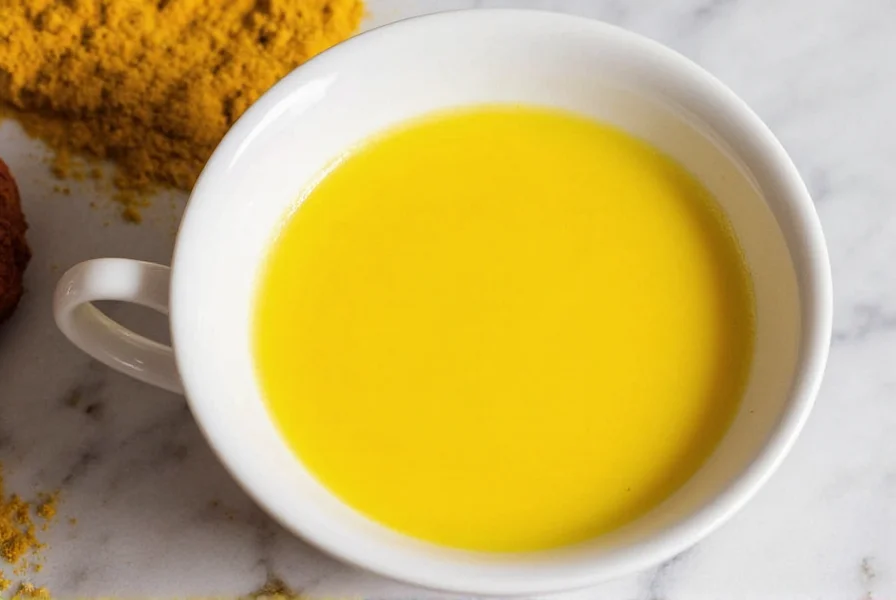The simplest turmeric tea recipe combines 1 cup of water, 1 teaspoon of fresh grated turmeric (or ½ teaspoon turmeric powder), ½ teaspoon fresh grated ginger, a pinch of black pepper, and optional honey or lemon. Simmer for 5-10 minutes, strain, and enjoy this golden beverage known for its potential health benefits.
Discover how to make turmeric tea that delivers both flavor and potential wellness benefits with this authentic preparation method. This golden-hued beverage, sometimes called “golden milk,” has gained worldwide popularity for its earthy taste and traditional use in Ayurvedic wellness practices. Whether you're seeking a caffeine-free alternative to morning coffee or a soothing evening ritual, this turmeric tea recipe provides a perfect balance of simplicity and effectiveness.
Understanding Turmeric Tea’s Wellness Potential
Turmeric contains curcumin, a compound studied for its potential anti-inflammatory and antioxidant properties. When prepared correctly with black pepper (which contains piperine) and a small amount of healthy fat, the bioavailability of curcumin increases significantly. This traditional turmeric tea preparation method maximizes potential absorption while creating a comforting beverage.
While scientific research continues on turmeric’s health effects, many people incorporate this golden tea into their wellness routines as part of a balanced lifestyle. Remember that turmeric tea should complement, not replace, professional medical advice or treatment.

Essential Ingredients for Perfect Turmeric Tea
This easy turmeric tea recipe for beginners requires minimal ingredients with flexible substitution options:
| Ingredient | Amount | Substitution Options |
|---|---|---|
| Water or milk alternative | 1 cup | Almond milk, coconut milk, oat milk |
| Fresh turmeric root | 1 teaspoon grated | ½ teaspoon turmeric powder |
| Fresh ginger | ½ teaspoon grated | ¼ teaspoon ground ginger |
| Black pepper | Pinch (⅛ teaspoon) | None (but reduces curcumin absorption) |
| Healthy fat | ¼ teaspoon | Coconut oil, ghee, or MCT oil |
| Sweetener (optional) | To taste | Honey, maple syrup, or stevia |
Step-by-Step Preparation: How to Make Turmeric Tea
Follow these detailed instructions for perfect golden milk tea every time:
- Prepare ingredients: Grate fresh turmeric and ginger (wear gloves to prevent staining). If using powders, measure accurately.
- Simmer base: In a small saucepan, combine water (or milk alternative), turmeric, ginger, and black pepper.
- Cook gently: Bring to a simmer over medium heat, then reduce to low. Let it simmer uncovered for 5-10 minutes (longer for stronger flavor).
- Add fat: Stir in your healthy fat of choice, which helps with curcumin absorption.
- Strain: Pour through a fine mesh strainer into your favorite mug to remove solid particles.
- Finish: Add sweetener if desired and stir well. Lemon can be added at this stage for brightness.
- Enjoy: Sip slowly while warm for the best experience.
Popular Variations for Your Turmeric Tea
Customize your homemade golden milk tea with these simple adaptations:
- Golden Milk Latte: Use ½ cup almond milk and ½ cup water for creamier texture
- Lemon Ginger Boost: Add 2-3 slices of lemon during simmering for vitamin C
- Spiced Turmeric Tea: Include a cinnamon stick, cardamom pod, or clove while simmering
- Cold Brew Turmeric Tea: Steep ingredients in cold water for 12 hours in the refrigerator
- Post-Workout Recovery Tea: Add a scoop of protein powder after straining
Serving and Storage Recommendations
For optimal enjoyment of your turmeric tea preparation:
- Best served: Warm, immediately after preparation
- Ideal time to drink: Morning to start your day or evening as a relaxing ritual
- Storage: Keep in a sealed container in the refrigerator for up to 3 days
- Reheating: Gently warm on stove (avoid boiling) and stir well before serving
- Batch preparation: Make 3-4 servings at once for convenience throughout the week
Important Considerations When Making Turmeric Tea
While turmeric tea is generally safe for most people, keep these points in mind:
- Turmeric may stain clothing, countertops, and utensils - use caution with fresh root
- Consult your healthcare provider before regular consumption if you take blood thinners
- Those with gallbladder issues should consult a doctor before consuming turmeric regularly
- Pregnant or breastfeeding women should discuss turmeric consumption with their healthcare provider
- Start with smaller amounts to assess tolerance before increasing consumption

Maximizing Your Turmeric Tea Experience
To get the most from your turmeric tea recipe:
- Use fresh turmeric root when possible for maximum potency
- Always include a pinch of black pepper to enhance curcumin absorption
- Add a small amount of healthy fat (coconut oil, ghee) to further improve absorption
- Don't boil the tea vigorously as this may degrade beneficial compounds
- Consider making it part of your daily routine rather than occasional consumption
Frequently Asked Questions
How often should I drink turmeric tea for best results?
Most experts suggest 1-2 cups of turmeric tea daily as part of a balanced routine. Start with once daily to assess your body's response, then potentially increase to twice daily. Consistency matters more than quantity - drinking turmeric tea regularly over time yields better results than occasional large servings.
Can I make turmeric tea without black pepper?
Yes, you can make turmeric tea without black pepper, but you'll miss out on enhanced curcumin absorption. Black pepper contains piperine, which can increase curcumin absorption by up to 2,000%. If you dislike black pepper's taste, try using just a small pinch, or consider alternatives like long pepper which provides similar benefits with a different flavor profile.
What's the difference between turmeric tea and golden milk?
Traditional turmeric tea typically uses water as the base, while golden milk uses milk or a milk alternative. Golden milk often contains additional spices like cinnamon and cardamom, and tends to be creamier and sweeter. Both provide turmeric benefits, but golden milk offers enhanced curcumin absorption due to the fat content in milk. The water-based turmeric tea is lower in calories and suitable for those avoiding dairy or fats.
How long does homemade turmeric tea last in the refrigerator?
Properly stored in an airtight container, homemade turmeric tea will maintain its quality for 3-4 days in the refrigerator. You may notice separation of ingredients, which is normal - simply stir well before reheating. For best results, store in glass containers rather than plastic, and avoid adding sweeteners until ready to consume to prevent spoilage.
Can I use ground turmeric instead of fresh root?
Absolutely. While fresh turmeric root offers slightly higher potency, ground turmeric works perfectly well in this recipe. Use ½ teaspoon of ground turmeric for every 1 teaspoon of fresh grated turmeric. Ground turmeric dissolves more easily but may leave sediment at the bottom of your cup, so stir well before drinking. Store ground turmeric in a cool, dark place to maintain potency.











 浙公网安备
33010002000092号
浙公网安备
33010002000092号 浙B2-20120091-4
浙B2-20120091-4